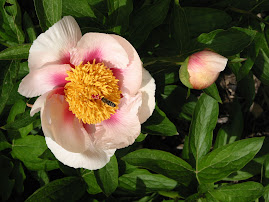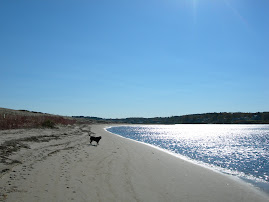On Saturday morning, I watched a TiVo’d episode of “World’s Greenest Homes” on Planet Green. During the episode, host Emmanuel Belliveau introduced us to a home in Toronto with a living wall, which is basically a partition of plants. According to Belliveau, “15 to 18 good-sized plants can actually filter the air of a 1,800-square-foot house . . . purifying the air and even cooling it by several degrees.”
A biological air filter-slash-air conditioner? Yup.
According to the Environmental Protection Agency (EPA), the air in our home is more polluted than the outdoor air in most big cities. Called indoor air pollution, this can lead to all sorts of health ailments, including allergies.
In addition to going green in your house with non-toxic flooring, window treatments, furniture, and other design elements, you should literally go green with an array of plants. A NASA-sponsored study determined plants in a closed environment actually extract pollutants from the air—the foliage removes pollutions and the roots act as carbon filters.
Apparently, different plants have different cleaning styles: English ivy battles off-gassing from petroleum-based products, spider plants tackle formaldehyde, and aloe vera works its magic against most toxic materials. Do your research to see which plants will work best in your home and in the lighting available in each room.
After watching the “living wall” episode of “World’s Greenest Homes,” I suggested to Mark that we should add to the six plants already in our house. He agreed, and so yesterday we bought seven more along with organic potting soil. We’re not up to 18 plants yet, but we’re on our way . . . and we started by concentrating the plants we have into the rooms we use the most: our bedroom, living room, and kitchen.
Now, if only “cleaning” our house meant plants would wash the dishes.
Question of the blog: Do you have any green tips for developing a green thumb?
A biological air filter-slash-air conditioner? Yup.
According to the Environmental Protection Agency (EPA), the air in our home is more polluted than the outdoor air in most big cities. Called indoor air pollution, this can lead to all sorts of health ailments, including allergies.
In addition to going green in your house with non-toxic flooring, window treatments, furniture, and other design elements, you should literally go green with an array of plants. A NASA-sponsored study determined plants in a closed environment actually extract pollutants from the air—the foliage removes pollutions and the roots act as carbon filters.
Apparently, different plants have different cleaning styles: English ivy battles off-gassing from petroleum-based products, spider plants tackle formaldehyde, and aloe vera works its magic against most toxic materials. Do your research to see which plants will work best in your home and in the lighting available in each room.
After watching the “living wall” episode of “World’s Greenest Homes,” I suggested to Mark that we should add to the six plants already in our house. He agreed, and so yesterday we bought seven more along with organic potting soil. We’re not up to 18 plants yet, but we’re on our way . . . and we started by concentrating the plants we have into the rooms we use the most: our bedroom, living room, and kitchen.
Now, if only “cleaning” our house meant plants would wash the dishes.
Question of the blog: Do you have any green tips for developing a green thumb?




1 comment:
This is excellent. I always wondered how many plants it would take to do a certain volume. well done!
real green girl
Post a Comment